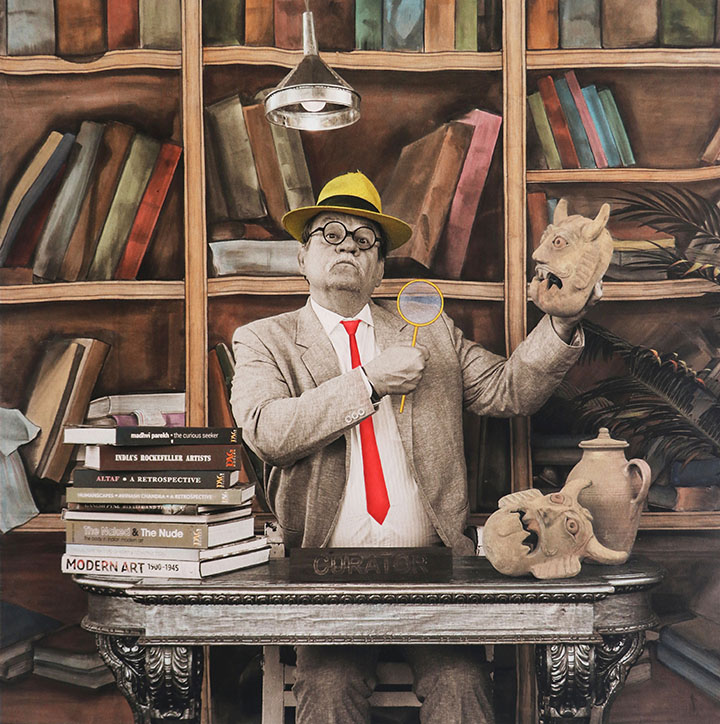
Calling attention to the place of performance, or the “stage”, upon which studio photography is enacted, Gallery Latitude 28 presents works by American-born photographer Waswo X Waswo, in collaboration with Rajasthani miniaturist Rajesh Soni and traditional terracotta sculptor Shyam Lal Kumhar.
Part portraiture from Waswo and Soni’s well-known Studio in Rajasthan and part spoof on both the studio process and the photographer himself, this exhibition focuses on studio photography. The title, ‘We Are Always Working’, references the ongoing process Waswo and his studio engage in, both physically, as well as in a wider philosophical discourse concerning his practice and methods.
Waswo X Waswo’s career in India has spanned almost two decades. Utilising the medium of studio photography is a method of self-discovery, navigating between personal revelation and inspired fantasy. With traditionally hand-painted backdrops, the photographic studio became a quasi-diorama in which Waswo and his models playfully devised a series of tableaux. His elaborate processes, involving casting local people as ‘models’ in the photoshoots, are akin to co-operative theatre performances.
“Photographic self-portraiture has been a tactic of humour employed to signal the self-awareness of my practice. In these portraits, I enact the role of the fedora-wearing gentleman seen in the paintings that I create with R Vijay. As in the miniatures, this man is at times a representative of self, at others an Everyman, at others an ‘Evil Orientalist’ (a role that I’ve embraced with tongue-in-cheek glee). They carry forward, and further complicate, an ever-evolving narrative of the foreigner within the Indian context,” he says.
Waswo’s sepia photographs, hand painted by Udaipur-based photo hand colourist Rajesh Soni, take on a dream-like quality, which harks back to ethnographic photography of bygone eras while maintaining temporal roots in the contemporary. Interplay develops between the villagers who populate Waswo’s work, the caricature of Waswo himself and ‘artefacts’, which he inspects under a magnifying glass.
‘The Orientalist’ as a concept plays with the notions of otherness, ethnic stereotyping and Western fetishisation of the developing world, however, the driving force is that in this day and age a stereotype has been made of ‘The Orientalist’ himself. He is now encapsulated in the very same diorama as his subjects, playing out scenes in which the symbolic figure offers itself up for scrutiny, generalisation, categorisation and questioning.
“Mild, self-critical humour always has a humanising influence. Employing it has never been a deeply thought-out strategy, but a reply from the heart. The issues of Otherness and Othering remain, but keeping lightness in approach does the best job of lighting our way of making,” adds Waswo X Waswo.
The exhibition is on display at Gallery Latitude 28 till September 28
Putin is expected to make diplomatic visits to Rajghat, Bharat Mandapam, Hyderabad House and Rashtrapati…
Toxic air persists with AQI at 323; sharp morning chill adds to city’s discomfort
The government has mandated intensive cleanliness drives and zero tolerance for dust as Delhi steps…
The crisis exposes failing drainage systems and recurring pipeline leaks across the capital
The event is produced and promoted by TCO Group, in partnership with TM Ventures and…
Residents say drilling for the new metro line has damaged homes and left families without…